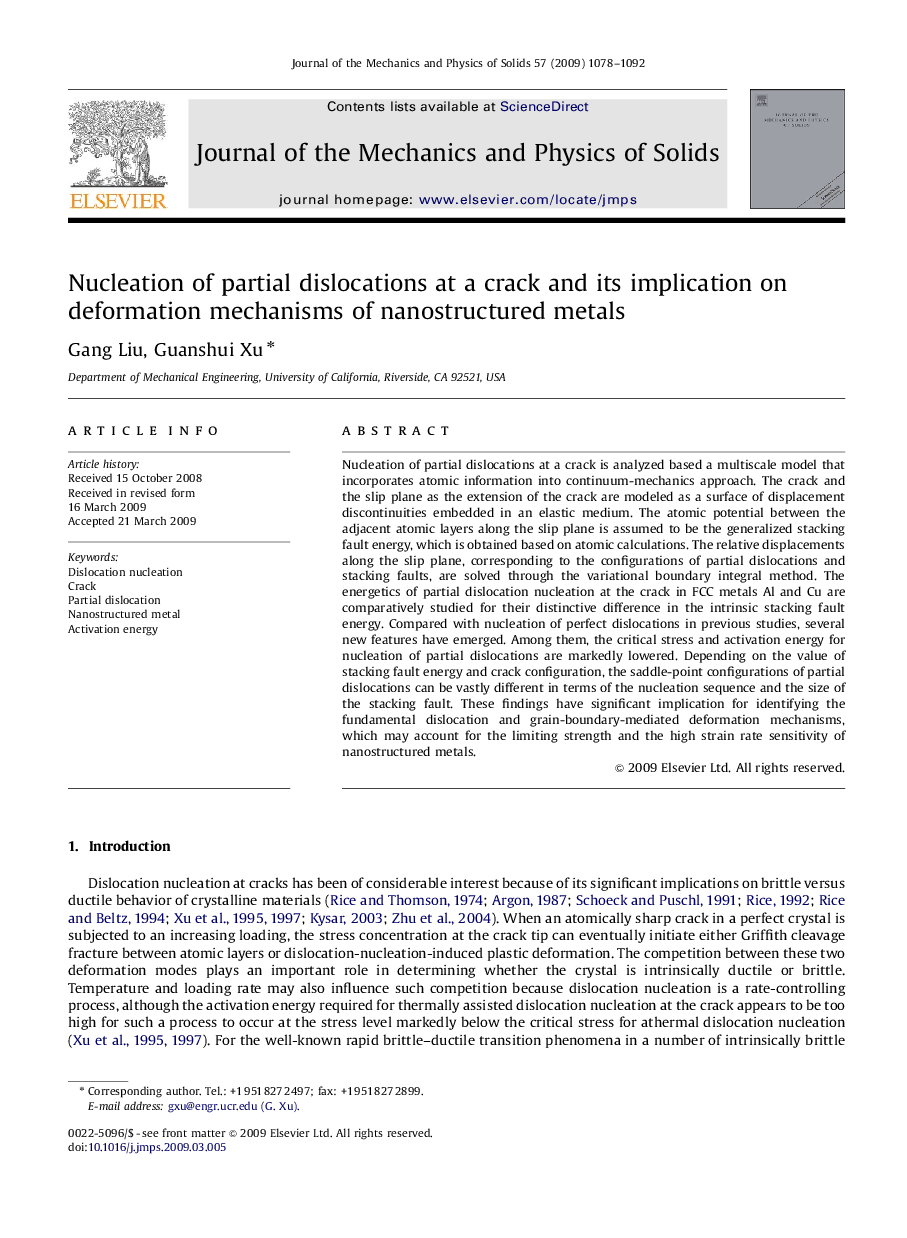| Article ID | Journal | Published Year | Pages | File Type |
|---|---|---|---|---|
| 797400 | Journal of the Mechanics and Physics of Solids | 2009 | 15 Pages |
Nucleation of partial dislocations at a crack is analyzed based a multiscale model that incorporates atomic information into continuum-mechanics approach. The crack and the slip plane as the extension of the crack are modeled as a surface of displacement discontinuities embedded in an elastic medium. The atomic potential between the adjacent atomic layers along the slip plane is assumed to be the generalized stacking fault energy, which is obtained based on atomic calculations. The relative displacements along the slip plane, corresponding to the configurations of partial dislocations and stacking faults, are solved through the variational boundary integral method. The energetics of partial dislocation nucleation at the crack in FCC metals Al and Cu are comparatively studied for their distinctive difference in the intrinsic stacking fault energy. Compared with nucleation of perfect dislocations in previous studies, several new features have emerged. Among them, the critical stress and activation energy for nucleation of partial dislocations are markedly lowered. Depending on the value of stacking fault energy and crack configuration, the saddle-point configurations of partial dislocations can be vastly different in terms of the nucleation sequence and the size of the stacking fault. These findings have significant implication for identifying the fundamental dislocation and grain-boundary-mediated deformation mechanisms, which may account for the limiting strength and the high strain rate sensitivity of nanostructured metals.
